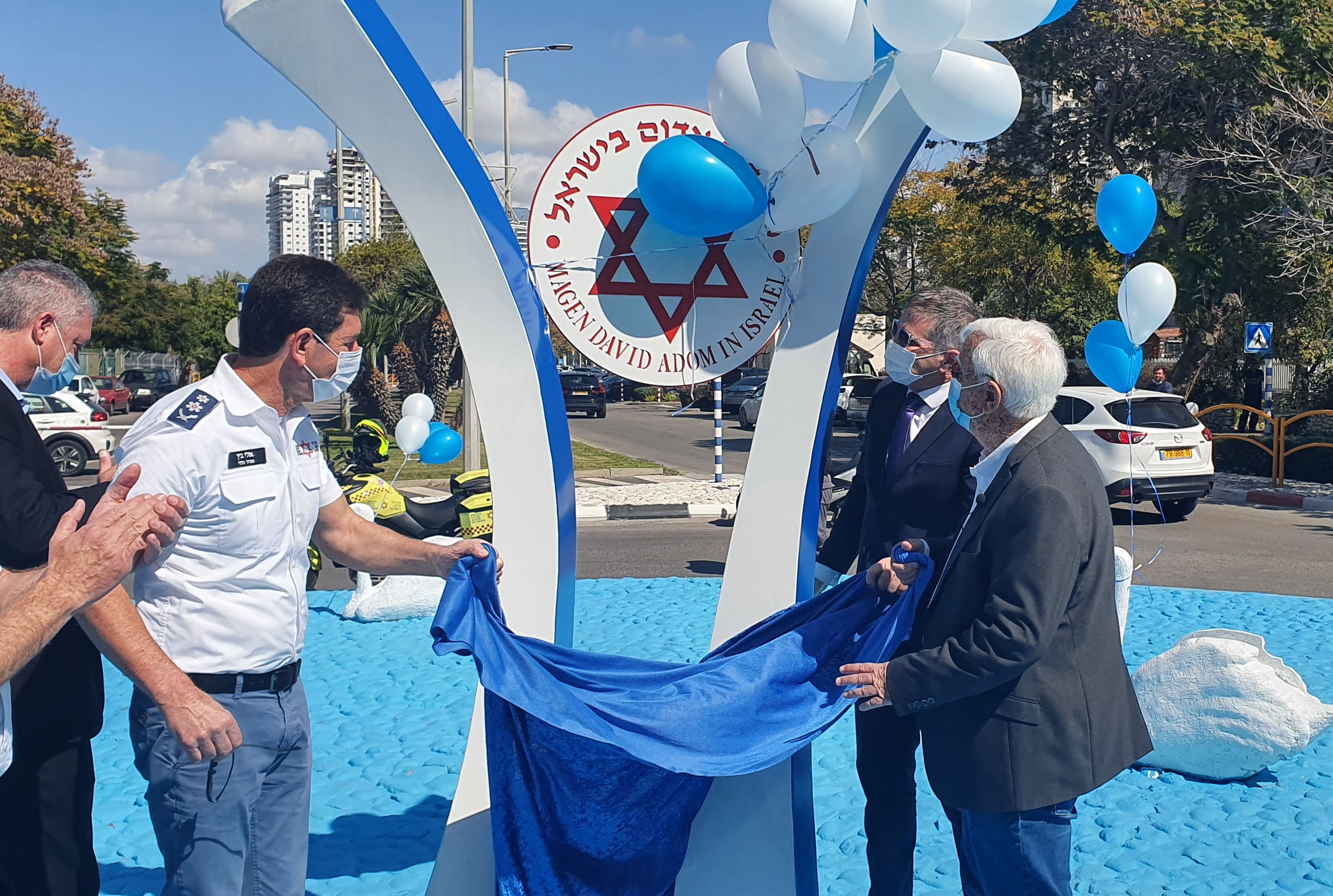

Noyovitch told JNS that the facility’s construction, which has been in the works since 2017, was a unique project and one of the most challenging engineering endeavors he has ever been a part of. To ensure the highest levels of protection, and continuity of operations in war scenarios, every critical system has a secondary system, including two ramps leading into the underground floors, four sets of elevators and four generators. The first (uppermost) underground floor houses shielded blood bank laboratories, a transportation center and secure fleet parking, where all new ambulances will be equipped. With the vault on the lowest level, the second underground floor houses the Cord Blood Inventory, an R&D molecular lab and a chemical and biological warfare air-filtration system that enables all staff throughout the building to continue working and processing blood in the event of a chemical or biological attack.

Industrial and mechanical engineer Moshe Noyovitch, a senior AFMDA representative who oversaw the establishment of the center from its conception, led the group on a tour of the three underground floors. Through the use of advanced technologies and an automated laboratory blood testing system, she said the new facility will be able to produce double that amount.Īt the same time, Shinar added, “It’s only a matter of time before the current blood services center is hit. Photo: American Friends of Magen David Adom.Īccording to Shinar, the current blood services center processes around 270,000 units of blood per year, which she said would not be sufficient given Israel’s population growth. Professor Eilat Shinar, M.D., director of Magen David Adom’s National Blood Services Division. Shinar said that the new facility “will allow us to provide increased blood services, with excellent quality, and in a very cutting edge, modern facility, that will enable us to accommodate the country for the next 20-30 years.” She shared that MDA works “from vein to vein” as hospitals in Israel receive 97% of their blood supplies from MDA, while the IDF relies exclusively on MDA for 100% of its blood supply. It’s an important step for the safety of Israel’s blood supply.” In the past, during rocket attacks, MDA has had to cease processing blood and move the country’s blood reserves into a bomb shelter, interrupting blood production at a time when it might be needed most.ĭuring a press tour of the building last week, professor Eilat Shinar, director of MDA’s National Blood Services Division, told JNS that “the new blood services center is really a dream come true for us. The current national blood services facility in Ramat Gan was built in the 1980s and is not large enough to meet the demands of Israel’s growing population or the country’s needs in times of war. Industrial and mechanical engineer Moshe Noyovitch opens a subterranean blast door at the Marcus National Blood Services Center.


 0 kommentar(er)
0 kommentar(er)
